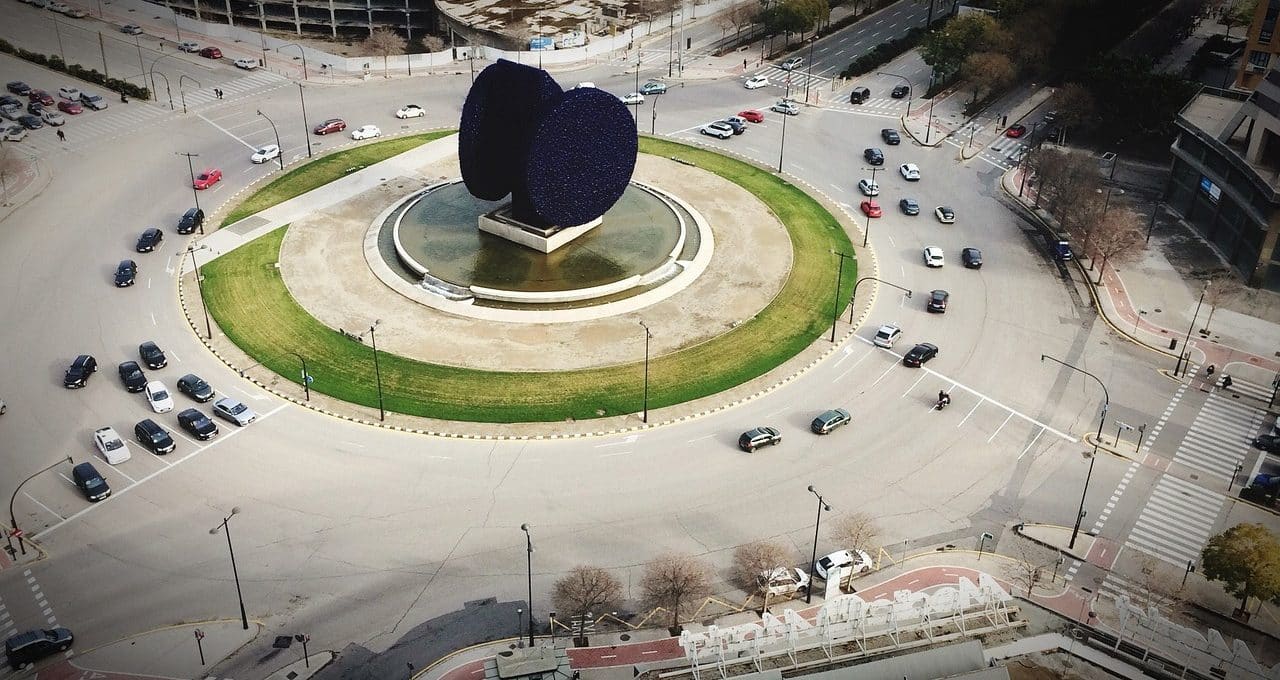
A roundabout is a road construction that organizes the crossing of roads.
Rotunda is a concept used to name different circular constructions and structures . The most frequent use is associated with road construction that allows the crossing of different roads , reducing the danger of accidents occurring.
A roundabout, also known as a roundabout , oval or roundabout , is an intersection of roads (routes), avenues or streets. All the roads that meet at the roundabout are connected to each other by a ring: vehicles, in this way, must circulate around its center .
Utility of a roundabout
It can be said that a roundabout consists of a small square that has a circular road around it into which other roads join. In those regions where you drive on the right side, traffic on the roundabout occurs in an anti- clockwise direction .
Road safety experts say that roundabouts minimize the risk of accidents as they force people to reduce speed within their own radius. On the other hand, when roads are crossed without a roundabout, traffic lights must be installed to regulate traffic , with the disadvantage that drivers may choose not to respect them.

Roundabouts facilitate the circulation of vehicles.
Common driver mistakes
Although it may seem incredible, a study carried out in mid- 2015 in Spain revealed that 80% of drivers make one or more errors when traveling through roundabouts . According to the Professional Association of Road Safety Training Companies , it is not uncommon for the person to be unaware of all the lanes and to position themselves in them incorrectly, committing more than one recklessness that can end in very serious accidents. In statistical numbers, up to 29.3% of car accidents in the country take place on roundabouts.
These figures reach their peak mainly on interurban roads, since the speed of cars makes it impossible to brake in time if the location of the next roundabout is not known. The least common mistake is not yielding when joining, as this rule seems to be common knowledge; On the other hand, the most frequent ones are set out below:
- Using lanes incorrectly : it is estimated that 75% of the population does not know with certainty the correct use of each lane. This entails a detriment to the flow of traffic , especially when a driver drives on the wrong side to perform the desired maneuver, whether he wants to change direction or exit the roundabout. The situation worsens when the street has two lanes, since the traffic rules of the roundabout are subject to the characteristics of its location.
- Using the turn signal incorrectly : more than 50% of drivers do not bother to use the turn signal to warn others that they will leave the roundabout, while 30% usually use the left one to indicate that they will continue in a straight line or not. They will turn at the next exit without moving into the center lane, and they change their turn signal from one moment to the next as soon as they are about to exit.
- Driving in a straight line to cross lanes : this reckless act is committed by 15% of people, but it is the one that causes the most deaths and serious accidents.
Other meanings of the term roundabout
In the field of architecture , the hall or circular building that is covered with a roof of the same shape is called a rotunda. The main chapel of the Monastery of San Lorenzo de El Escorial (in Madrid , Spain ) and the Pantheon of Agrippa (in Rome , Italy ) are rotundas in the architectural sense.
For geometry , finally, a pentagonal rotunda is a polyhedron that is part of the group known as Johnson solids .
